Cartalax 20mg (10 vial kit)
Cartalax 20mg (10 vial kit)
Cartalax, a bioregulatory peptide, promotes cartilage and bone health by enhancing cellular proliferation and reducing apoptosis, provides anti-aging benefits by rejuvenating cells, and improves skin health through increased tissue regeneration and reduced aging markers. (PMID: 23060229, PMID: 3239980, PMID: 32362083 )
Cartalax Research Topics:
-
Cartilage and Bone Health:
Cartalax normalizes the function of cartilage and bone tissues by promoting cellular proliferation and reducing apoptosis, which supports the regeneration of these tissues. This makes it beneficial for conditions like osteoarthritis and osteoporosis. (PMID: 23060229)
-
Anti-Aging Properties:
It acts as an anti-aging agent by rejuvenating aging cells and restoring their vitality, which helps in maintaining the overall health of tissues. Cartalax reduces the levels of pro-aging cytokines and signaling molecules, enhancing cellular vitality and reducing cell mortality. (PMID: 3239980)
-
Skin Health:
Cartalax enhances skin health by improving cell proliferation, tissue regeneration, and extracellular matrix remodeling while reducing apoptosis. It inhibits the synthesis of MMP-9, an enzyme associated with skin aging, and increases the expression of molecules that decline with aging. (PMID: 32362083)
Structure
Amino Acid Sequence: Ala-Glu-Asp (AED) Molecular Formula: C12H19N3Oa
Molecular Weight: 333.29 g/mol
PubChem CID: 8781544 7
Synonyms: T-31, AED, SCHEMBL5324601, Alanylglutamyl-aspartic acid
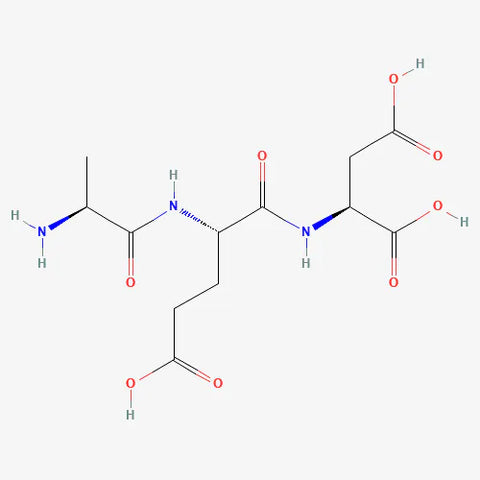
Source: PubChem
Cartalax and Skin
Research in skin shows that Cartalax boosts levels of proliferation, tissue regeneration, and extracellular matrix remodeling, particularly in older animals, while decreasing apoptosis. This effect appears to be mediated through fibroblasts, the cells primarily responsible for extracellular matrix deposition in things like tendons, skin, and cartilage.
It appears that Cartalax and other, similar peptides inhibit MMP-9 synthesis, which is known to increase during the aging of the skin while enhancing the expression of Ki-67 and CD98hc, which are less intensely expressed during cell aging. Cartalax also suppresses apoptosis through the caspase pathway [1].
In recent years, Vladimir Khavinson has shown that Cartalax and several other short peptides are polyfunctional. That is to say, these peptides are less tissue-specific than some other bioregulatory peptides by nature of the fact that the processes they affect are ubiquitous throughout an organism. Cartalax, in particular, has been shown to stimulate skin cell proliferation, slow apoptosis, improve microcirculation, and increase the functional activity of skin fibroblasts which leads to improvement in carnosine, collagen, cytokine, and growth factors [2],[3]. Khavinson points out that these various functions make polyfunctional peptides, like Cartalax, important antioxidants, and immunoprotectors.
Cartalax and Cartilage
It is worth noting that fibroblasts are among the most versatile cells in the human body. They are responsible for the production of extracellular matrix components in many tissues ranging from skin to bone to cartilage. A lot has been made of the ability of Cartalax to benefit cartilage function and joint health, but is there any research to back that claim up?
The direct answer is no. There is no research specific to cartilage and Cartalax that would have earned the peptide its name. However, there is abundant research on fibroblasts and Cartalax that suggests that the peptide would be of tremendous benefit in cartilage. After all, research shows that fibroblasts are the primary regulators of cartilage homeostasis [4]. Cartalax affects the following components of fibroblasts.
• AP-1
• NF-kB
• c-jun
• CCNl
• TGF-B
• TNF-a
• MMP-1
• MMP-3
• MMP-8
• MMP-9
• Glycation
Now, the best way to think of the role of Cartalax is as a balancing agent. In other words, Cartalax doesn’t affect just one of the components of fibroblasts listed above but rather helps to normalize and balance the function of fibroblasts such that they work as efficiently as possible. This effect is particularly pronounced in older cells, which experience greater dysregulation than younger cells.
Take for instance MMP-1, which is important in tissue remodeling, embryonic development, and disease processes like arthritis and metastasis. Its primary job is to break down interstitial collagen types I, II, and Ill. This breakdown is necessary for tissue to change and adapt to new stresses, but can become pathological if it is excessive or isn’t balanced by collagen deposition. Other MMPs have similar functions, all of which are balanced by Cartalax to promote the balance between breakdown and build-up of tissue.
Given its widespread impact on fibroblast function, it should come as no surprise that Cartalax is being researched in some connective tissue conditions including arthritis, osteoporosis, degenerative disc disease, gout, and certain systemic connective tissue diseases like lupus.
Cartalax and Kidney Health
In early research, it was found that polypeptide isolates from calf kidneys could stimulate cell renewal in older rat kidneys. This research revealed that the polypeptide isolates operated by increasing levels of proliferation marker Ki-67 and decreasing levels of the pro-apoptotic peptide p53. Analysis of the isolate revealed that two peptides, Cartalax (AED) and T-35 (EDL) were present in the polypeptide isolate, though they did not constitute all of it [5]. This led scientists to look deeper into the properties and functions of peptides like Cartalax.
Research in renal(kidney) cell cultures shows that Cartalax increases cell proliferation while decreasing markers of aging such as p16, p21, and p53 proteins. Additionally, Cartalax increases the expression of SIRT-6, levels of which are heavily correlated with senescence. Low SIRT-6 levels are thought to trigger senescence in fact [6].
Cartalax and Age
The above topics skirt around the obvious fact that Cartalax is a geroprotective bioregulatory peptide. Like so many other short bioregulators, Cartalax appears to have its most profound effects on older cells, resetting them to a more youthful state. Research on Cartalax and a host of other bioregulators shows that they affect the expression of several gene products known to play important roles in the aging process. Genes like IGFl, FOXOl, TERT, TNKS2, and NF-kB are all affected in various ways by Cartalax and other bioregulators. Changes in expression levels are dramatic too, ranging from 1.6- to 5.6-fold [7].
Cartalax Summary
Cartalax is a short bioregulatory peptide with widespread systemic impact due to its effects on fibroblasts. It has been shown to benefit the skin and other connective tissues as well as the kidneys. Research shows that Cartalax increases cell proliferation rates and beneficially alters the levels of various cytokines and signaling molecules associated with senescence. Overall, it increases cell health and proliferation while decreasing cell death. Cartalax is thought of as an anti-aging peptide, returning older cells to a more youthful state and prolonging overall tissue health.
Article Author
The above literature was researched, edited, and organized by Dr. Logan, M.D. Dr. Logan holds a doctorate from Case Western Reserve University School of Medicine and a B.S. in molecular biology.
Scientific Journal Author
Vladimir Khavinson is a Professor, resident of the European region of the International Association of Gerontology and Geriatrics; Member of the Russian and Ukrainian Academies of Medical Sciences; Main gerontologist of the Health Committee of the Government of Saint Petersburg, Russia; Director of the Saint Petersburg Institute of Bioregulation and Gerontology; Vice president of Gerontological Society of the Russian Academy of Sciences; Head of the Chair of Gerontology and Geriatrics of the North-Western State Medical University, St-Petersburg; Colonel of medical service (USSR, Russia), retired. Vladimir Khavinson is known for the discovery, experimental, and clinical studies of new classes of peptide bioregulators as well as for the development of bioregulating peptide therapy. He is engaged in studying the role of peptides in the regulation of the mechanisms of ageing. His main field of action is the design, pre-clinical, and clinical studies of new peptide geroprotectors. A 40-year investigation resulted in a multitude of methods of application of peptide bioregulators to slow down the process of aging and increase human life span. Six peptide-based pharmaceuticals and 64 peptide food supplements have been introduced into clinical practice by V. Khavinson. He is an author of 196 patents (Russian and international) as well as of 775 scientific publications. His major achievements are presented in two books: “Peptides and Ageing” (NEL, 2002) and “Gerontological Aspects of Genome Peptide Regulation” (Karger AG, 2005). Vladimir Khavinson introduced the scientific specialty “Gerontology and Geriatrics” in the Russian Federation on the governmental level. Academic Council headed by V. Khavinson has oversight over 200 Ph.D. and Doctorate theses from many different countries.
Prof. Vladimir Khavinson is being referenced as one of the leading scientists involved in the research and development of Cartalax. In no way is this doctor/scientist endorsing or advocating the purchase, sale, or use of this product for any reason. There is no affiliation or relationship, implied or otherwise, between Life Link Research and this doctor. The purpose of citing the doctor is to acknowledge, recognize, and credit the exhaustive research and development efforts conducted by the scientists studying this peptide.
Referenced Citations
- N. S. Lin’kova et al., “Peptide Regulation of Skin Fibroblast Functions during Their Aging In Vitro,” Bull. Exg Biol. Med., vol. 161, no. 11 pp. 175-178, May. 2016, doi:
10.1007 ls10517-016-3370-x. - V. K. Khavinson, N. S. Linkova, A. S. Diatlova, E. 0. Gutop, and 0. A. Orlova, “[Short peptides: regulation of skin function during aging],” Adv. Gerontol. Useekhi Gerontol.,. vol. 33, no. 1, Qp. 46-54, 2020.
- E. 0. Gutop, A. S. Diatlova, N. S. Linkova, 0. A. Orlova, S. V. Trofimova, and V. K. Khavinson, “[Aging of skin fibroblasts: genetic and epigenetic factors.],” Adv. Gerontol. Useekhi Gerontol., vol. 32, no. 6, Qp. 908- 914, 2019.
- M. B. Ellman, D. Yan, K. Ahmadinia, D. Chen, H. S. An, and H.J. Im, “Fibroblast growth factor control of cartilage homeostasis,” J. Cell. Biochem., vol. 114, no. 41 pp. 735-742, 8pr. 2013, doi: 10.1002ljcb.24418.
- N. I. Chalisova, N. S. Lin’kova. T. E. Nichik. A. P. Ryzhak, A. V. Dudkov, and G. A. Ryzhak, “Peptide Regulation of Cells Renewal Processes in Kidney Tissue Cultures from Young and Old Animals,” Bull. Exp Biol. Med., vol. 159, no. 1, pp. 124-127, May. 2015, doi: 10.1007ls10517-015-2906-9.
- V. K. Khavinson et al., “[Tripeptides slow down aging process in renal cell culture] Adv. Gerontol. Useekhi Gerontol., vol. 27, no. 1.i._pp. 651-656,2014.
- V. Ashapkin, V. Khavinson, G. Shilovsky, N. Linkova, and B. Vanuyshin, “Gene expression in human mesenchymal stem cell aging cultures: modulation by short peptides,” Mo/. Biol. Reg., vol. 47, no. 61 pp. 4323-4329, Jun. 2020, doi: 10.1007/s11033-020-05506-3.
$470.00
Description
Cartalax, a bioregulatory peptide, promotes cartilage and bone health by enhancing cellular proliferation and reducing apoptosis, provides anti-aging benefits by rejuvenating cells, and improves skin health through increased tissue regeneration and reduced aging markers. (PMID: 23060229, PMID: 3239980, PMID: 32362083 )
Cartalax Research Topics:
-
Cartilage and Bone Health:
Cartalax normalizes the function of cartilage and bone tissues by promoting cellular proliferation and reducing apoptosis, which supports the regeneration of these tissues. This makes it beneficial for conditions like osteoarthritis and osteoporosis. (PMID: 23060229) -
Anti-Aging Properties:
It acts as an anti-aging agent by rejuvenating aging cells and restoring their vitality, which helps in maintaining the overall health of tissues. Cartalax reduces the levels of pro-aging cytokines and signaling molecules, enhancing cellular vitality and reducing cell mortality. (PMID: 3239980) -
Skin Health:
Cartalax enhances skin health by improving cell proliferation, tissue regeneration, and extracellular matrix remodeling while reducing apoptosis. It inhibits the synthesis of MMP-9, an enzyme associated with skin aging, and increases the expression of molecules that decline with aging. (PMID: 32362083)
Structure
Amino Acid Sequence: Ala-Glu-Asp (AED) Molecular Formula: C12H19N3Oa
Molecular Weight: 333.29 g/mol
PubChem CID: 8781544 7
Synonyms: T-31, AED, SCHEMBL5324601, Alanylglutamyl-aspartic acid

Source: PubChem
Cartalax and Skin
Research in skin shows that Cartalax boosts levels of proliferation, tissue regeneration, and extracellular matrix remodeling, particularly in older animals, while decreasing apoptosis. This effect appears to be mediated through fibroblasts, the cells primarily responsible for extracellular matrix deposition in things like tendons, skin, and cartilage.
It appears that Cartalax and other, similar peptides inhibit MMP-9 synthesis, which is known to increase during the aging of the skin while enhancing the expression of Ki-67 and CD98hc, which are less intensely expressed during cell aging. Cartalax also suppresses apoptosis through the caspase pathway [1].
In recent years, Vladimir Khavinson has shown that Cartalax and several other short peptides are polyfunctional. That is to say, these peptides are less tissue-specific than some other bioregulatory peptides by nature of the fact that the processes they affect are ubiquitous throughout an organism. Cartalax, in particular, has been shown to stimulate skin cell proliferation, slow apoptosis, improve microcirculation, and increase the functional activity of skin fibroblasts which leads to improvement in carnosine, collagen, cytokine, and growth factors [2],[3]. Khavinson points out that these various functions make polyfunctional peptides, like Cartalax, important antioxidants, and immunoprotectors.
Cartalax and Cartilage
It is worth noting that fibroblasts are among the most versatile cells in the human body. They are responsible for the production of extracellular matrix components in many tissues ranging from skin to bone to cartilage. A lot has been made of the ability of Cartalax to benefit cartilage function and joint health, but is there any research to back that claim up?
The direct answer is no. There is no research specific to cartilage and Cartalax that would have earned the peptide its name. However, there is abundant research on fibroblasts and Cartalax that suggests that the peptide would be of tremendous benefit in cartilage. After all, research shows that fibroblasts are the primary regulators of cartilage homeostasis [4]. Cartalax affects the following components of fibroblasts.
• AP-1
• NF-kB
• c-jun
• CCNl
• TGF-B
• TNF-a
• MMP-1
• MMP-3
• MMP-8
• MMP-9
• Glycation
Now, the best way to think of the role of Cartalax is as a balancing agent. In other words, Cartalax doesn’t affect just one of the components of fibroblasts listed above but rather helps to normalize and balance the function of fibroblasts such that they work as efficiently as possible. This effect is particularly pronounced in older cells, which experience greater dysregulation than younger cells.
Take for instance MMP-1, which is important in tissue remodeling, embryonic development, and disease processes like arthritis and metastasis. Its primary job is to break down interstitial collagen types I, II, and Ill. This breakdown is necessary for tissue to change and adapt to new stresses, but can become pathological if it is excessive or isn’t balanced by collagen deposition. Other MMPs have similar functions, all of which are balanced by Cartalax to promote the balance between breakdown and build-up of tissue.
Given its widespread impact on fibroblast function, it should come as no surprise that Cartalax is being researched in some connective tissue conditions including arthritis, osteoporosis, degenerative disc disease, gout, and certain systemic connective tissue diseases like lupus.
Cartalax and Kidney Health
In early research, it was found that polypeptide isolates from calf kidneys could stimulate cell renewal in older rat kidneys. This research revealed that the polypeptide isolates operated by increasing levels of proliferation marker Ki-67 and decreasing levels of the pro-apoptotic peptide p53. Analysis of the isolate revealed that two peptides, Cartalax (AED) and T-35 (EDL) were present in the polypeptide isolate, though they did not constitute all of it [5]. This led scientists to look deeper into the properties and functions of peptides like Cartalax.
Research in renal(kidney) cell cultures shows that Cartalax increases cell proliferation while decreasing markers of aging such as p16, p21, and p53 proteins. Additionally, Cartalax increases the expression of SIRT-6, levels of which are heavily correlated with senescence. Low SIRT-6 levels are thought to trigger senescence in fact [6].
Cartalax and Age
The above topics skirt around the obvious fact that Cartalax is a geroprotective bioregulatory peptide. Like so many other short bioregulators, Cartalax appears to have its most profound effects on older cells, resetting them to a more youthful state. Research on Cartalax and a host of other bioregulators shows that they affect the expression of several gene products known to play important roles in the aging process. Genes like IGFl, FOXOl, TERT, TNKS2, and NF-kB are all affected in various ways by Cartalax and other bioregulators. Changes in expression levels are dramatic too, ranging from 1.6- to 5.6-fold [7].
Cartalax Summary
Cartalax is a short bioregulatory peptide with widespread systemic impact due to its effects on fibroblasts. It has been shown to benefit the skin and other connective tissues as well as the kidneys. Research shows that Cartalax increases cell proliferation rates and beneficially alters the levels of various cytokines and signaling molecules associated with senescence. Overall, it increases cell health and proliferation while decreasing cell death. Cartalax is thought of as an anti-aging peptide, returning older cells to a more youthful state and prolonging overall tissue health.
Article Author
The above literature was researched, edited, and organized by Dr. Logan, M.D. Dr. Logan holds a doctorate from Case Western Reserve University School of Medicine and a B.S. in molecular biology.
Scientific Journal Author
Vladimir Khavinson is a Professor, resident of the European region of the International Association of Gerontology and Geriatrics; Member of the Russian and Ukrainian Academies of Medical Sciences; Main gerontologist of the Health Committee of the Government of Saint Petersburg, Russia; Director of the Saint Petersburg Institute of Bioregulation and Gerontology; Vice president of Gerontological Society of the Russian Academy of Sciences; Head of the Chair of Gerontology and Geriatrics of the North-Western State Medical University, St-Petersburg; Colonel of medical service (USSR, Russia), retired. Vladimir Khavinson is known for the discovery, experimental, and clinical studies of new classes of peptide bioregulators as well as for the development of bioregulating peptide therapy. He is engaged in studying the role of peptides in the regulation of the mechanisms of ageing. His main field of action is the design, pre-clinical, and clinical studies of new peptide geroprotectors. A 40-year investigation resulted in a multitude of methods of application of peptide bioregulators to slow down the process of aging and increase human life span. Six peptide-based pharmaceuticals and 64 peptide food supplements have been introduced into clinical practice by V. Khavinson. He is an author of 196 patents (Russian and international) as well as of 775 scientific publications. His major achievements are presented in two books: “Peptides and Ageing” (NEL, 2002) and “Gerontological Aspects of Genome Peptide Regulation” (Karger AG, 2005). Vladimir Khavinson introduced the scientific specialty “Gerontology and Geriatrics” in the Russian Federation on the governmental level. Academic Council headed by V. Khavinson has oversight over 200 Ph.D. and Doctorate theses from many different countries.
Prof. Vladimir Khavinson is being referenced as one of the leading scientists involved in the research and development of Cartalax. In no way is this doctor/scientist endorsing or advocating the purchase, sale, or use of this product for any reason. There is no affiliation or relationship, implied or otherwise, between Life Link Research and this doctor. The purpose of citing the doctor is to acknowledge, recognize, and credit the exhaustive research and development efforts conducted by the scientists studying this peptide.
Referenced Citations
- N. S. Lin’kova et al., “Peptide Regulation of Skin Fibroblast Functions during Their Aging In Vitro,” Bull. Exg Biol. Med., vol. 161, no. 11 pp. 175-178, May. 2016, doi:
10.1007 ls10517-016-3370-x. - V. K. Khavinson, N. S. Linkova, A. S. Diatlova, E. 0. Gutop, and 0. A. Orlova, “[Short peptides: regulation of skin function during aging],” Adv. Gerontol. Useekhi Gerontol.,. vol. 33, no. 1, Qp. 46-54, 2020.
- E. 0. Gutop, A. S. Diatlova, N. S. Linkova, 0. A. Orlova, S. V. Trofimova, and V. K. Khavinson, “[Aging of skin fibroblasts: genetic and epigenetic factors.],” Adv. Gerontol. Useekhi Gerontol., vol. 32, no. 6, Qp. 908- 914, 2019.
- M. B. Ellman, D. Yan, K. Ahmadinia, D. Chen, H. S. An, and H.J. Im, “Fibroblast growth factor control of cartilage homeostasis,” J. Cell. Biochem., vol. 114, no. 41 pp. 735-742, 8pr. 2013, doi: 10.1002ljcb.24418.
- N. I. Chalisova, N. S. Lin’kova. T. E. Nichik. A. P. Ryzhak, A. V. Dudkov, and G. A. Ryzhak, “Peptide Regulation of Cells Renewal Processes in Kidney Tissue Cultures from Young and Old Animals,” Bull. Exp Biol. Med., vol. 159, no. 1, pp. 124-127, May. 2015, doi: 10.1007ls10517-015-2906-9.
- V. K. Khavinson et al., “[Tripeptides slow down aging process in renal cell culture] Adv. Gerontol. Useekhi Gerontol., vol. 27, no. 1.i._pp. 651-656,2014.
- V. Ashapkin, V. Khavinson, G. Shilovsky, N. Linkova, and B. Vanuyshin, “Gene expression in human mesenchymal stem cell aging cultures: modulation by short peptides,” Mo/. Biol. Reg., vol. 47, no. 61 pp. 4323-4329, Jun. 2020, doi: 10.1007/s11033-020-05506-3.




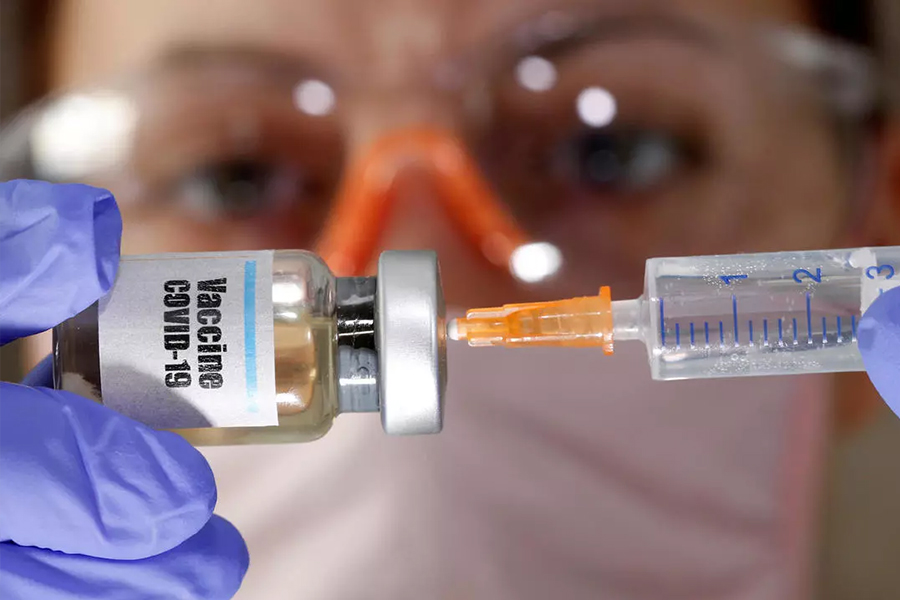

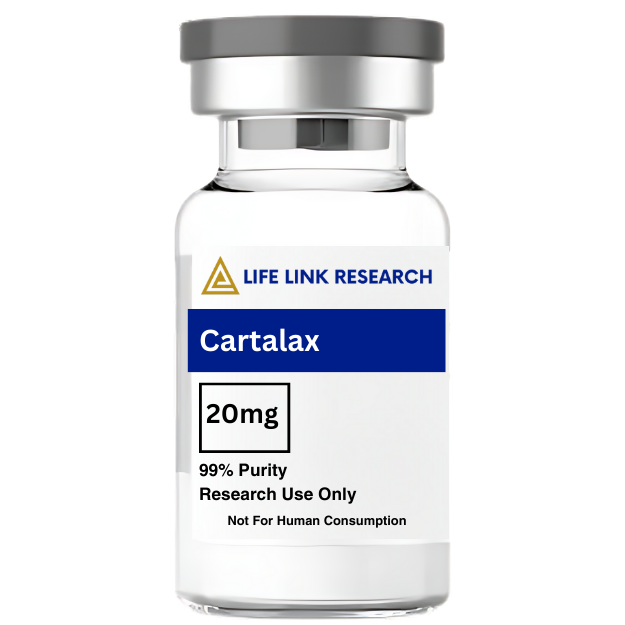
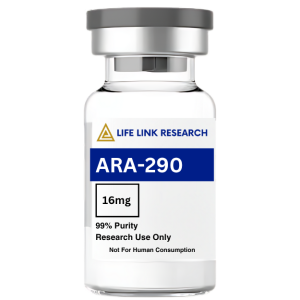
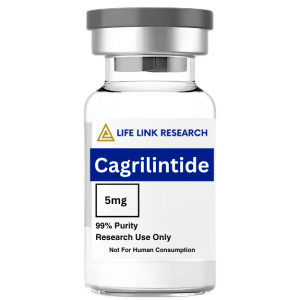
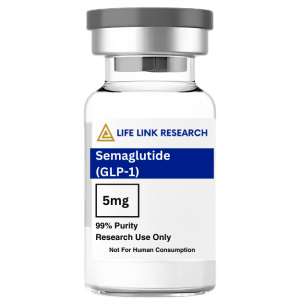
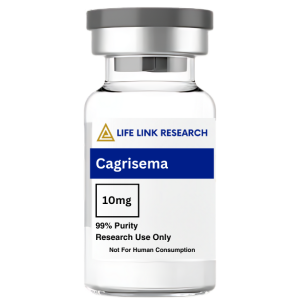
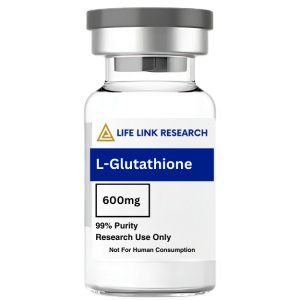
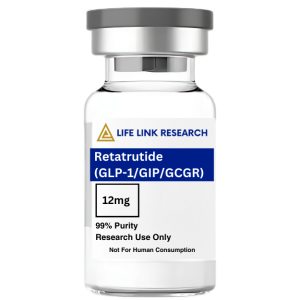


Reviews
There are no reviews yet.